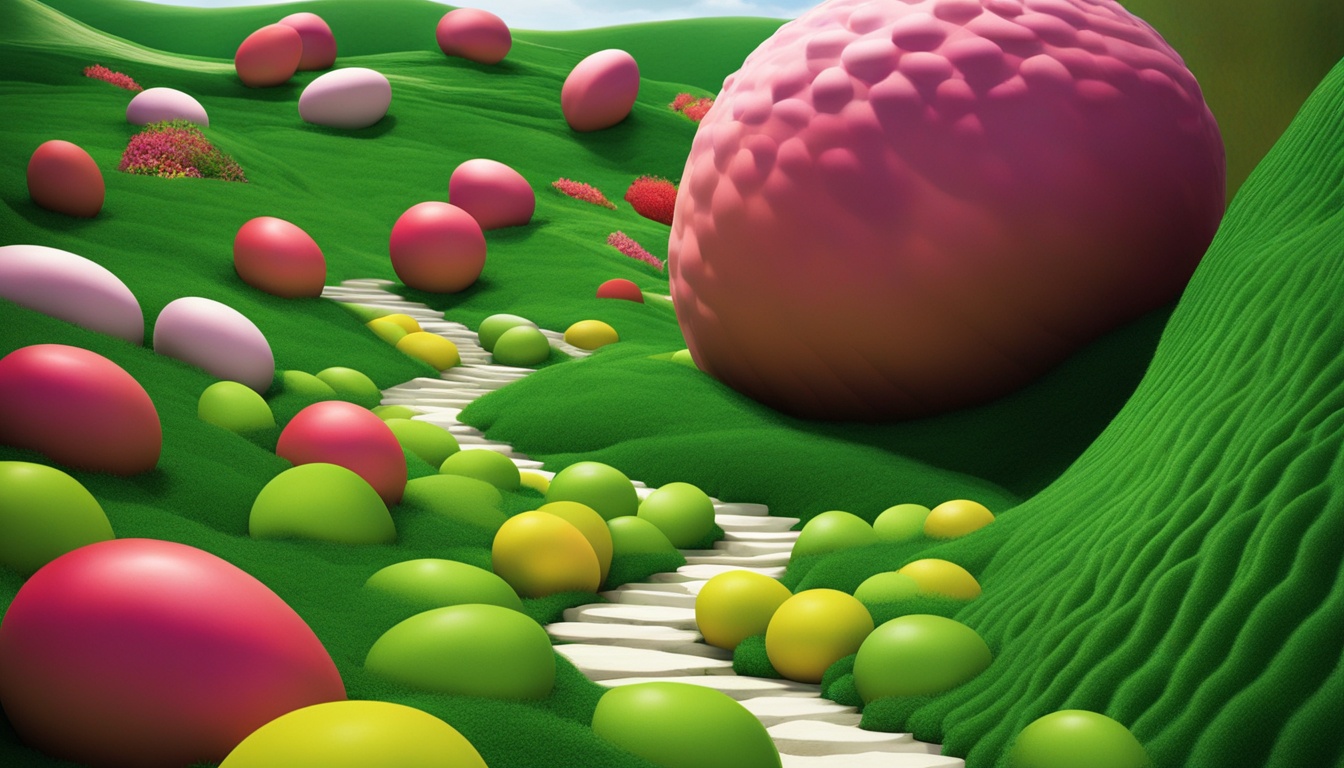Have you ever wondered what it would be like to dine in the fantastical world of Dr. Seuss? To experience a culinary adventure that combines haute cuisine techniques with the whimsy of childhood? Look no further than the magical dish of Green Eggs & Ham. But here’s the question: How does spherification bring this Dr. Seuss-inspired creation to life?
Within the realm of molecular gastronomy, spherification is a game-changer, offering chefs the power to transform ordinary ingredients into extraordinary spheres bursting with flavor. In this article, we will unravel the delicate science behind spherification and explore how it has revolutionized modernist cuisine trends, giving birth to imaginative dishes like Green Eggs & Ham.
The Science Behind Spherification
Spherification is an exciting technique used in molecular gastronomy that allows chefs to transform liquid ingredients into delicate spheres that burst with flavor when consumed. This innovative process combines culinary science and artistic presentation, resulting in visually stunning and tantalizing dishes like Green Eggs & Ham.
The spherification process begins by creating a liquid mixture that is thickened using sodium alginate, a natural thickener derived from seaweed. Sodium alginate enables the liquid to maintain its shape, ensuring that the resulting spheres are perfectly formed. This culinary science marvel opens up a world of possibilities for chefs to experiment with different flavors and textures, pushing the boundaries of traditional culinary techniques.
Once the liquid mixture is prepared, it is carefully dripped into a calcium chloride bath. Calcium chloride, an essential component in this process, reacts with the sodium alginate to create a thin membrane around the liquid, encapsulating it in a sphere-like shape. The reaction between the two creates a gel-like texture, adding a unique mouthfeel to the dish.
The result of spherification is visually captivating and deliciously interactive. Each sphere contains a burst of flavor encapsulated within a delicate membrane, creating a captivating sensory experience for diners. From savory dishes like Green Eggs & Ham to desserts and cocktails, spherification opens up a world of creative possibilities that challenge traditional culinary norms.
Through the use of spherification, chefs can showcase their culinary expertise and bring a touch of molecular gastronomy to their creations. This technique highlights the fascinating intersection of culinary science and artistic presentation, elevating the dining experience to new heights. Whether you’re a food enthusiast or a professional chef, exploring the world of spherification and the broader realm of molecular gastronomy promises to impress and captivate your taste buds.
Dr. Seuss-inspired Dishes: A Culinary Adventure
Dr. Seuss’s imaginative world has inspired chefs to bring his stories to life on the plate. By using culinary creativity and artistic presentation techniques, we transform dishes like Green Eggs & Ham into a whimsical adventure for the senses.
Our chefs leverage their skills in plating and storytelling through food to create visually captivating and imaginative culinary presentations. Drawing inspiration from Dr. Seuss’s literary universe, they craft dishes that not only surprise and delight guests with their playful aesthetics, but also evoke memories of childhood and transport diners into a world of whimsy.
Through imaginative plating, we take culinary artistry to new heights, designing dishes that are as visually appealing as they are delicious. The vibrant colors, unique textures, and whimsical food arrangements become an integral part of the dining experience, enhancing not only the taste but also the storytelling aspect of the meal.
Just like Dr. Seuss’s books, our Dr. Seuss-inspired culinary creations tell a story. Each dish is carefully crafted to take diners on a culinary journey, invoking a sense of wonder and curiosity. With every bite, guests become part of the narrative, experiencing the magic of Dr. Seuss’s world through food.
These Dr. Seuss-inspired dishes showcase the boundaries of culinary imagination, demonstrating the power of storytelling through food. By merging creativity, plating techniques, and a touch of whimsy, we bring joy to the dining table and create unforgettable culinary adventures.
Modernist Cuisine Trends: Exploring New Frontiers
The modernist cuisine movement has brought together the realms of science and cuisine, giving birth to a new era of culinary exploration and innovation. Chefs and food enthusiasts alike are venturing into uncharted territory by incorporating cutting-edge culinary techniques into their creations, pushing the boundaries of traditional cooking methods. Spherification, along with other molecular gastronomy techniques like foam creation and sous vide cooking, have gained significant popularity in this movement, offering chefs endless possibilities for culinary experimentation.
At the heart of modernist cuisine is a quest for culinary excellence through ongoing learning and discovery. By embracing these trends, chefs have the opportunity to create dishes that challenge conventional notions of flavor, texture, and presentation. The fusion of scientific principles with the art of cooking enables them to craft unique and out-of-the-box creations that captivate diners and tantalize their taste buds.
One remarkable example of modernist cuisine’s influence is showcased in the dish Green Eggs & Ham. By employing the technique of spherification, which transforms liquid ingredients into edible spheres, chefs are able to recreate the whimsical and vibrant eggs depicted in Dr. Seuss’s famous book. This harmonious blend of science, storytelling, and culinary expertise gives birth to a truly extraordinary culinary experience, capturing the essence of modernist cuisine’s commitment to innovation.
Culinary innovation knows no bounds, as chefs continue to push the envelope and explore new frontiers in the modernist cuisine movement. With their commitment to cutting-edge culinary techniques, culinary experimentation, and the constant pursuit of culinary excellence, these gastronomic pioneers inspire us to embrace a new era of culinary creativity and exploration.
